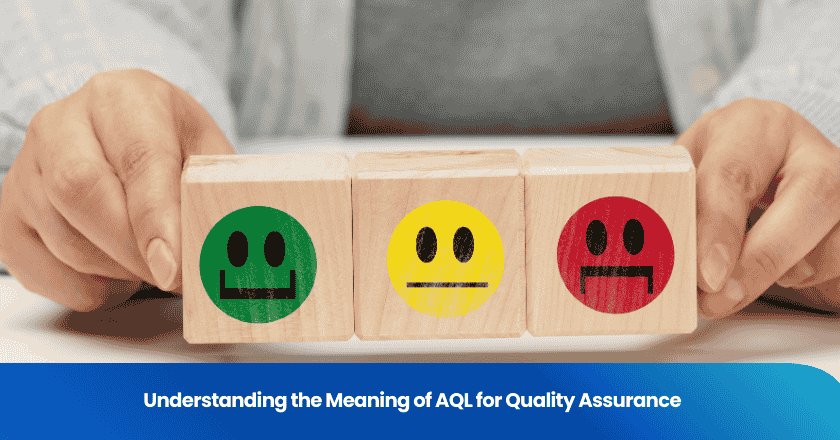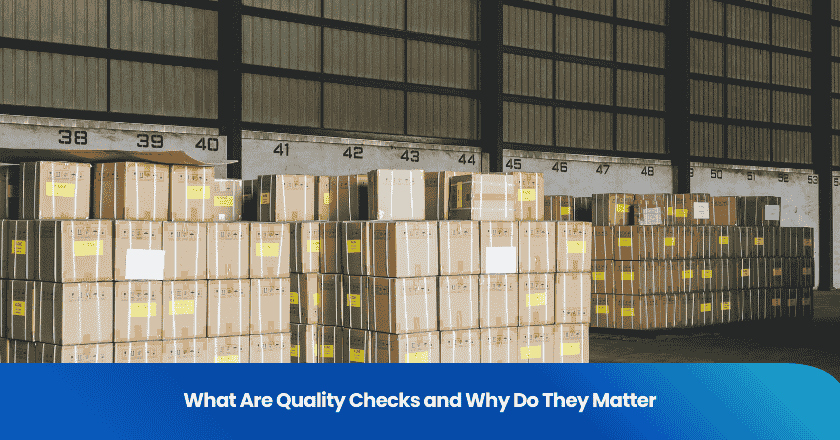
AQL stands for Acceptable Quality Limit, a critical concept in quality assurance. Manufacturers rely on AQL to determine the meaning of aql and set boundaries for defects in each product batch. The meaning of aql guides teams in making decisions during inspection and helps maintain consistent product standards. Quality managers use AQL to assess whether a batch meets the required level of quality. Understanding AQL ensures that only products meeting specific criteria reach customers.
Meaning of AQL
What Is AQL?
The meaning of aql centers on its role as a benchmark in quality assurance. AQL stands for acceptance quality limit, sometimes referred to as acceptable quality level. The ISO 2859 standard defines AQL as the threshold that determines the maximum acceptable number of defective items in a batch. This concept helps manufacturers and inspectors decide if a batch meets the required standards before it reaches customers.
AQL provides a clear methodology for evaluating product batches. It sets a statistical boundary for the number of defects allowed. When inspectors perform sampling inspections, they use the meaning of aql to decide if the batch passes or fails. This process ensures that only products within the acceptable quality limit move forward in the supply chain.
Note: The meaning of aql does not guarantee zero defects. Instead, it establishes a practical limit that balances quality expectations with production realities.
Acceptance Quality Limit
The acceptance quality limit serves as the maximum tolerable number or proportion of defects in a batch. This value is not random. It follows strict guidelines set by the iso 2859 standard. Inspectors select a sample from the batch and count the defects. If the number of defects stays within the acceptable quality limit, the batch passes inspection.
The acceptable quality limit applies to different types of defects, such as critical, major, or minor. Each type may have its own acceptable quality limit, depending on the product and industry requirements. The acceptable quality limit helps organizations maintain consistent quality while managing inspection resources efficiently.
AQL acts as a statistical measure. It supports decision-making in quality control by providing a clear, objective standard. Companies use this approach to ensure that their products meet both customer expectations and regulatory requirements.
Key points about AQL:
- Defines the maximum acceptable number of defective items in a batch.
- Relies on statistical sampling, not full inspection.
- Supports consistent quality across production runs.
AQL remains an essential part of modern quality assurance. It allows organizations to balance the need for high standards with the realities of large-scale production.
AQL in Quality Control
Sampling and Inspection
AQL plays a central role in product inspection. Quality teams use random sampling to select items from a batch for inspection. This method allows inspectors to evaluate the overall quality without checking every single product. During product inspections, inspectors look for defects and record their findings. They compare the number of defects found to the AQL threshold. If the defects remain below the limit, the batch passes inspection. If the defects exceed the limit, the batch fails product inspection.
Inspectors perform product inspections at different stages of production. They may inspect raw materials, components, or finished products. Each product inspection helps identify issues early and prevent defective products from reaching customers. Inspections also help companies maintain consistent quality standards across multiple production runs.
Tip: Random sampling increases efficiency and reduces the time needed for product inspections. It also provides a reliable snapshot of batch quality.
AQL ensures that inspections follow a structured process. Inspectors use clear criteria to judge whether a batch meets the required standards. This approach supports objective decision-making and reduces the risk of bias during product inspection.
AQL Charts and Tables
AQL charts and tables guide inspectors during product inspections. These tools show the acceptable number of defects for different batch sizes and inspection levels. Inspectors refer to AQL tables before starting product inspections. They select the appropriate sample size and AQL value based on the batch size and the type of product.
The following table illustrates how AQL charts help inspectors during product inspections:
| Batch Size | Sample Size | AQL Value | Maximum Defects Allowed |
|---|---|---|---|
| 500 | 50 | 1.0 | 1 |
| 1,000 | 80 | 2.5 | 3 |
| 5,000 | 200 | 4.0 | 8 |
Inspectors use these tables to determine if a batch meets the quality requirements. The AQL value sets the limit for defects. If the number of defects found during product inspection stays within the allowed range, the batch passes. If the defects exceed the limit, the batch fails product inspection.
AQL charts and tables simplify the process of accepting or rejecting a batch. Inspectors make decisions quickly and confidently. This system helps companies maintain high standards while managing inspection resources effectively.
Note: AQL charts and tables provide a standardized approach to product inspections. They help inspectors apply consistent criteria across different batches and products.
AQL supports the decision-making process in quality control. Inspectors rely on AQL to decide whether to accept or reject a batch based on the results of product inspections. This method ensures that only products meeting the required standards reach customers.
Interpreting AQL Levels
AQL Values
AQL values represent the threshold for defects that inspectors use during product inspection. These values appear as numbers, such as 1.0, 2.5, or 4.0, and each number indicates the maximum percentage of defective items allowed in a sample. Inspectors select an AQL value based on the product type and customer requirements. Lower AQL values mean stricter quality standards, while higher values allow more defects. For example, an AQL value of 1.0 means that only one defective item is acceptable in a sample of 100. Inspectors use these values to decide if a batch passes or fails inspection.
Tip: Choosing the right AQL value helps companies balance quality expectations with production efficiency.
AQL values guide inspectors in making objective decisions. They refer to AQL charts to match the batch size with the correct sample size and defect limit. This process ensures that inspection results remain consistent across different batches and products.
Defect Types
Inspectors classify defects into three main categories: critical, major, and minor. Each type affects the tolerance level set by AQL. Critical defects pose safety risks or cause the product to fail its intended function. Major defects reduce product usability but do not create safety concerns. Minor defects have little impact on product performance or appearance.
- Critical defects: Not tolerated; any occurrence leads to batch rejection.
- Major defects: Limited tolerance; AQL values are set low to minimize risk.
- Minor defects: Higher tolerance; AQL values may be set higher for cosmetic issues.
Inspectors record the number and type of defects during inspection. They compare these findings to the AQL values for each defect category. This approach ensures that only products meeting safety and quality standards reach customers. The classification system helps inspectors prioritize issues and maintain consistent inspection practices.
Note: Understanding defect types allows inspectors to apply AQL values accurately and maintain product quality.
AQL Benefits and Limitations
Advantages
AQL offers several advantages for organizations seeking to maintain high product standards. This method streamlines the inspection process by allowing teams to evaluate a sample rather than every item. Inspectors can quickly identify batches that meet or fail to meet the required quality. This efficiency saves time and resources, especially in large-scale production environments.
AQL supports objective decision-making. Inspectors follow clear guidelines during each inspection, which reduces the risk of personal bias. The aql-based approach also helps companies maintain consistency across different production runs. By setting specific thresholds, organizations ensure that only products meeting the desired quality reach customers.
Tip: Using AQL in quality assessment helps companies focus on continuous improvement and customer satisfaction.
Drawbacks
Despite its strengths, AQL has some limitations. Inspectors may miss defects that fall outside the selected sample, which means some issues could go undetected. Relying solely on sampling may not catch rare but serious problems. This limitation can affect the overall quality of the final product.
AQL does not guarantee zero defects. Some defective items may still pass through the inspection process. For products with strict safety requirements, this approach may not provide enough assurance. Inspectors must use additional methods for critical applications.
Example:
A manufacturer uses AQL to inspect batches of electronic components. Inspectors select a sample from each batch and perform a detailed inspection. If the number of defects stays within the allowed limit, the batch passes. If not, the batch fails and requires further review. This process helps the company maintain consistent quality while managing inspection costs.
AQL defines clear standards for acceptable defect levels in manufacturing. This approach helps organizations maintain product quality and make informed decisions during inspections. Teams that use AQL can manage risks and improve consistency. They should consider AQL as a key part of their quality control strategy. Striking the right balance between high expectations and practical inspection supports reliable outcomes.
FAQ
What does AQL stand for in quality assurance?
AQL stands for Acceptable Quality Limit. This term defines the maximum number of defects allowed in a batch during inspection. Quality professionals use aql to determine if a product batch meets established standards.
How do inspectors select an AQL value?
Inspectors choose an aql value based on product type, customer requirements, and industry standards. Lower values indicate stricter quality control, while higher values allow more defects. The selection process ensures products meet specific expectations.
Can AQL guarantee zero defects in a batch?
AQL does not guarantee zero defects. It sets a statistical limit for acceptable defects. Some defective items may still pass inspection, but the process helps maintain consistent product quality.
Why do companies use AQL sampling instead of inspecting every item?
Companies use aql sampling to save time and resources. Inspecting every item in large batches is often impractical. Sampling provides a reliable overview of batch quality while keeping inspection efficient.
Are AQL standards the same for all industries?
AQL standards vary by industry and product type. Each sector sets its own acceptable limits based on safety, function, and customer needs. Inspectors follow these guidelines to ensure compliance.
Grow your business with TradeAider Service
Click the button below to directly enter the TradeAider Service System. The simple steps from booking and payment to receiving reports are easy to operate.



